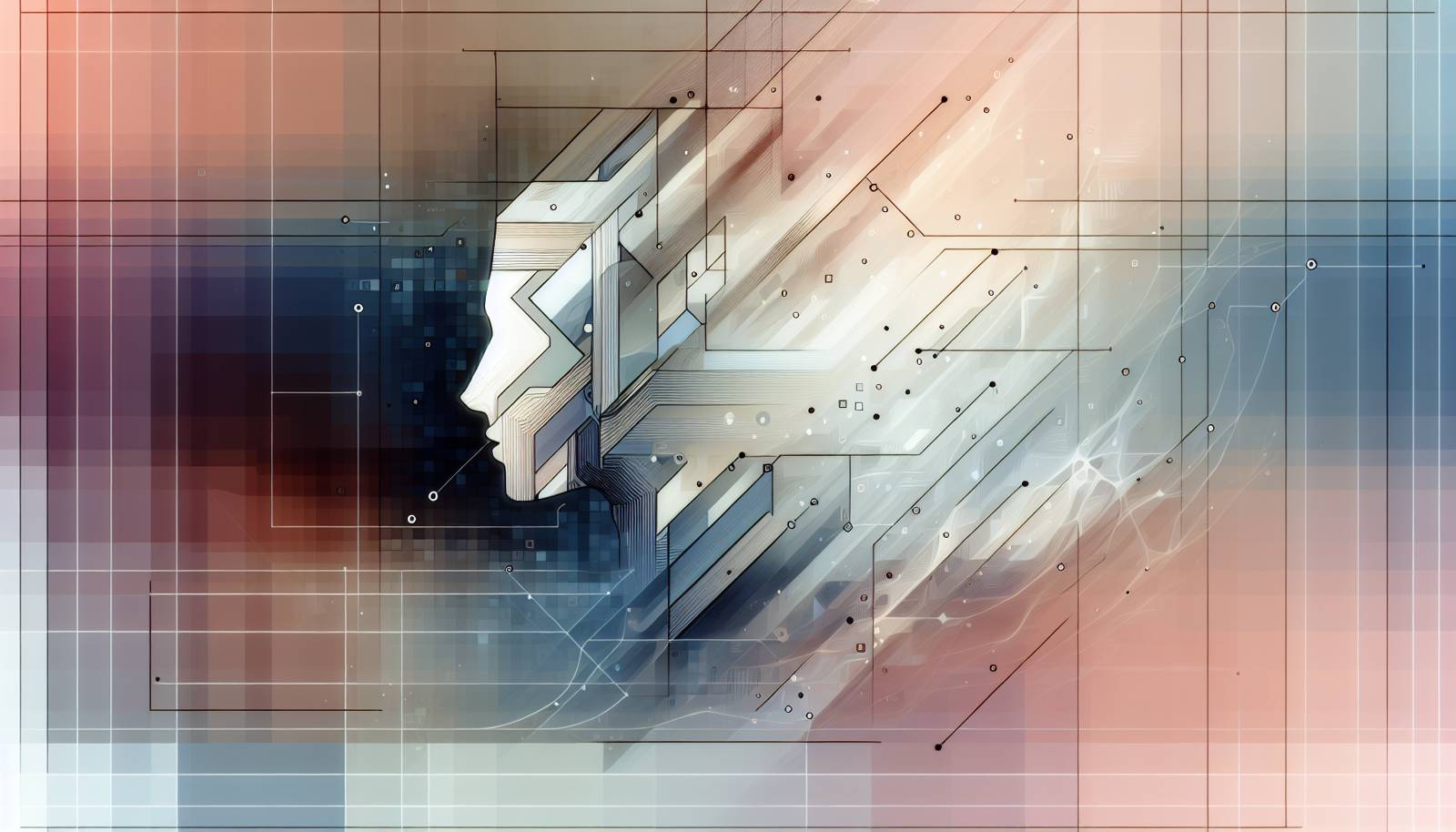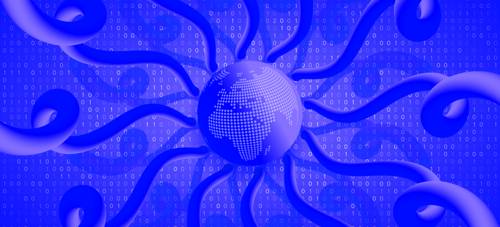
FAQ About The Influence of Cyberculture on Modern Artistic Expression

What is cyberculture and how does it relate to art?
Cyberculture refers to the culture that has emerged, or is emerging, from the use of computer networks for communication, entertainment, and business. It involves the social practices, norms, and media that are facilitated by digital technologies. In relation to art, cyberculture influences both the creation and dissemination of artworks, allowing artists to utilize digital tools to produce innovative forms of expression and reach wider audiences online.

How has digital technology transformed traditional art practices?
Digital technology has transformed traditional art practices by expanding the tools and mediums available to artists. Techniques that were once limited to physical materials, such as painting or sculpture, can now be explored digitally. Technologies like digital painting software, 3D modeling, and virtual reality allow for new artistic possibilities that blend traditional techniques with modern innovations. Artists can create, edit, and display their work in ways that were previously impossible in traditional media.

What are some examples of art forms influenced by cyberculture?
Art forms influenced by cyberculture include digital art, net art, interactive installations, video art, and virtual reality experiences. These forms often incorporate elements like AI, blockchain, and digital interaction, reflecting how artists adapt to cyber environments and technologies. Digital art can range from computer-generated imagery to multi-media installations that engage audiences through immersive experiences, showcasing the creative possibilities opened by cyberculture.

In what ways do online communities impact artistic expression?
Online communities impact artistic expression by providing platforms for artists to share work, collaborate, and receive feedback from a global audience. These communities often foster creative experimentation and innovation, encouraging diverse perspectives and styles. Participation in online forums or social media groups can inspire artists and influence their thematic and stylistic choices, making the artistic process more dynamic and interlinked with contemporary cultural dialogues.

How has the rise of social media platforms affected contemporary art?
Social media platforms have significantly affected contemporary art by democratizing access to art and providing new avenues for artists to reach audiences. These platforms allow artists to showcase their work globally with greater efficiency, gain instant feedback, and engage directly with their followers. Artists can draw inspiration from social media trends and interactions, leading to the creation of works that may critique, celebrate, or reinterpret aspects of digital life and connectivity. Additionally, social media challenges traditional gatekeeping by art institutions, offering alternative pathways to recognition and success.

What role does virtual reality play in modern artistic expression?
Virtual reality plays a transformative role in modern artistic expression by offering immersive environments where artists can create experiences not possible through traditional media. Artists use VR to engage audiences in interactive experiences that simulate various realities, offering new dimensions to storytelling and visual art. This technology can blend physical and digital spaces, allowing viewers to explore art pieces in three-dimensional settings, enhancing emotional and psychological engagement with the artwork.

Can cyberculture lead to collaborations between artists globally?
Yes, cyberculture can facilitate global collaborations between artists by leveraging digital tools that transcend geographical barriers. Online platforms and digital networks connect artists from around the world, enabling them to collaborate on projects without needing physical proximity. This not only enriches the diversity of artistic works but also cultivates a sense of global community among artists, fostering cultural exchange and innovative practices across regions.

What are some challenges artists face when working within cyberculture?
Artists working within cyberculture face several challenges, including issues related to copyright, the saturation of digital content, and maintaining authenticity in a highly curated digital environment. The widespread availability of digital tools can lead to increased competition, making it difficult for individual works to stand out. Additionally, navigating rapidly evolving technology and adapting to new platforms can be demanding. Artists must often balance creative expression with technical proficiency and the algorithms that influence visibility in cyberspace.

How do cyberculture and digital technology influence the themes of modern art?
Cyberculture and digital technology influence the themes of modern art by introducing topics such as digital identity, virtual experiences, privacy concerns, and the impact of technology on human interaction. Artists explore these themes to reflect on the complexities of living in an increasingly digital world. The constant interaction between technology and society provides fertile ground for artistic exploration, leading to works that comment on, critique, or celebrate the pervasive influence of digital media in everyday life.

Are there ethical considerations for artists using digital technology in their work?
Yes, there are several ethical considerations for artists using digital technology in their work. These include the use of copyrighted material, privacy concerns, and the environmental impact of digital technologies. Artists must be mindful of intellectual property rights and ensure their work does not infringe on others' creations. Privacy is another critical issue, especially in art using personal data or surveillance technologies. Additionally, the energy consumption and electronic waste associated with digital tools raise questions about sustainability, prompting artists to consider the ecological footprint of their digital practices.

What is the role of AI in the realm of contemporary art influenced by cyberculture?
AI plays a significant role in contemporary art influenced by cyberculture by acting as both a tool and a collaborator. Artists use AI to generate images, music, and even narratives, leveraging machine learning to create works that might be beyond human capabilities. AI can also analyze large datasets to identify trends and patterns, which can inform artistic creation. However, the use of AI raises questions about authorship, creativity, and the relationship between humans and technology, challenging traditional definitions of art and artist.

How does cyberculture influence the distribution of modern art?
Cyberculture influences the distribution of modern art by providing digital platforms that allow artworks to be shared globally, instantly, and often without traditional middlemen like galleries or agents. Artists can distribute their work through social media, online galleries, or blockchain technology, reaching diverse audiences. This shift democratizes access to art, enables direct engagement with viewers, and allows for innovative presentation formats like digital exhibitions or NFTs, significantly altering how art is appreciated and monetized.

What impact does blockchain technology have on contemporary art?
Blockchain technology impacts contemporary art primarily through the advent of Non-Fungible Tokens (NFTs), which allow digital artworks to be authenticated and sold as unique pieces. This technology helps artists monetize their digital works effectively and ensures authenticity and provenance, addressing issues related to duplication and fraud. Blockchain can facilitate transparent transactions and eliminate the need for traditional intermediaries, offering artists greater control over their creations and profits.

How are artists using augmented reality in their work?
Artists are using augmented reality (AR) to enhance physical art experiences by overlaying digital elements onto real-world environments. AR allows viewers to interact with static artworks dynamically, seeing animations, hearing sounds, or accessing additional information by using devices like smartphones or AR glasses. This technology blends tangible and digital elements, enriching storytelling and inviting viewers to engage with art in a multisensory and immersive manner.

What is net art and how does it exemplify the influence of cyberculture on art?
Net art, also known as Internet art, is art that uses the internet as its primary medium or platform. It exemplifies the influence of cyberculture on art by engaging with the internet's connectivity, interactivity, and digital environment. Artists create works that can be experienced online, often involving user participation, live data feeds, and networked communications. This form of art challenges traditional art boundaries, encouraging audience engagement and drawing attention to social issues within cyberspace.

How does cyberculture facilitate cultural evolution through art?
Cyberculture facilitates cultural evolution through art by merging traditional practices with innovative digital tools, creating mixed media artworks that reflect current societal trends and dialogues. Artists can swiftly adapt to societal changes, use technology to address contemporary issues, and reach a global audience, accelerating cultural dissemination and transformation. Cyberculture encourages artistic experimentation and open collaboration, influencing how cultures evolve in response to technological advancements.

Are there any notable artists known for integrating cyberculture in their work?
Several notable artists are known for integrating cyberculture into their work, including Cory Arcangel, for his use of digital media and video art; Jenny Holzer, who incorporates technology into her text-based works; and Rafael Lozano-Hemmer, who creates large-scale interactive installations. These artists employ cyberculture elements to explore themes like technology's role in society, digital identity, and interactive media, leveraging the internet and digital technologies to expand artistic possibilities.

How does cyberculture impact the perception of art in modern society?
Cyberculture impacts the perception of art in modern society by shifting how art is consumed, understood, and valued. With the prevalence of digital media, art is increasingly experienced online, changing its immediacy and accessibility. Audiences may engage more with art as it becomes part of everyday digital interaction, yet the oversaturation of online content can sometimes diminish its perceived importance. Cyberculture invites broader discussion about art's role as a societal narrative, as it navigates the balance between the virtual and the tangible world.

What are NFTs and how do they influence modern artistic expression?
Non-Fungible Tokens (NFTs) are crypto assets that represent ownership of unique digital items, such as art, music, or video. They influence modern artistic expression by providing a method for artists to monetize digital creations while ensuring authenticity and provenance. NFTs have revolutionized how art is bought and sold, empowering artists to engage directly with collectors without traditional intermediaries. This development encourages experimentation in digital art forms, attracting artists who explore the intersection of technology, ownership, and creativity.

How do artists address the balance between technology and traditional techniques in their work?
Artists address the balance between technology and traditional techniques by integrating digital tools while maintaining elements of classic artistic practices. Many artists merge painting, sculpture, or drawing methods with digital enhancements like VR, AR, and interactive installations. This balance is often used to explore themes of coexistence between the tangible and virtual world, producing works that resonate with contemporary issues while honoring historical art forms. By doing so, artists cultivate a dialogue between old and new, showcasing the evolving nature of artistic expression.
